Translated by Miguel Fernández Garrido.
There is a theory according to which, in most discussions and talk shows, when one of the parties has run out of things to say, they resort to some story about Nazis to settle the issue under discussion. In the case at hand, this is not the end, but the beginning of the story.
What could two of the most iconic cars in automotive history have in common with a mostly unknown car manufacturer? Well the truth, inconvenient as it may be for some, is that Adolf Hitler was the driving force behind two things that millions of people would love to own, namely the VW Beetle and the Porsche 911. Paradoxically, though, both cars came to be thanks to Ferdinand Porsche´s betrayal of his colleague, engineer Hans Ledwinka. Ledwinka had worked alongside old Ferdinand for Mercedes, but at the time of the betrayal he was one of the people in charge of running Tatra. Today, most of the people who know of this company do so because they have seen their trucks running in Paris-Dakar stages.
To understand what transpired in this story, I will first write about its main characters, leaving out any discussion of VW, Hitler and Porsche (both the man and the car make), as they all are well known by most.
Tatra, an unfairly unknown pioneering company
As I pointed out earlier, Tatra is a relatively unknown name around these parts, and those who have heard of it associate it with the impressive trucks that have for years crushed their competition in races such as the Paris-Dakar. However, Tatra is one of the world´s oldest car makers –along with Mercedes and Peugeot– and also one of the most daring as far as the development of groundbreaking technologies is concerned.
Founded in 1822, the Czech company named after the mountain ridge that bears the same name started manufacturing horse-drawn carriages in 1850. It was in 1897 that the first Tatra automobile came to be.
Tatra´s manufacturing quality having always been one of its strong points, the company received plenty of orders, but the best was yet to come: the arrival of genius Hans Ledwinka, who would introduce the Tatra 11 in 1921, such a revolutionary car that some of its features are still present in cars today. In fact, they are the key for the Tatra trucks to have such brilliant off road capability, namely, the concept of a transmission tunnel and fully independent wheel suspension.
Czech steel has always been reputed for its superb quality, and likewise the Tatra were really well-built: they were robust cars, technologically estate-of-the-art, and they were the first to recognize the importance of aerodynamics. In 1937 Tatra was marketing automobiles with a 0.21 drag coefficient. For the sake of comparison, the most aerodynamic car being marketed today is the Mercedes CLA, with a drag coefficient of 0.22. Enough said.
After WW II, the Tatra factory found itself in the wrong side of the iron curtain, doomed to be forgotten by the Western world, but it went on manufacturing outstanding cars –albeit utterly unknown to us westerners- aimed at the most powerful members of the Communist Party.

The performance of Tatra´s air-cooled engines was light years away from Porsche´s four cylinder engines
The performance of the air-cooled Tatra engines was light years away from the 4-cylinder Porsche engines.
The story goes, their cars were so reliable and so durable, that whenever one of them had already been driven too many miles (and I mean several hundreds of thousands), they were simply sent back to the factory for retooling some of its parts, or updating the interior and so on, while keeping the same original chassis.
Unfortunately, Tatra´s automobile division has not survived the winds of change. Their production costs were too high, a consequence of the company´s entrance into the capitalist market and its refusal to succumb to the market´s requirements for planned obsolescence.
Who was Hans Ledwinka?
Even though he was born in Austria in 1878, most of Ledwinka´s life and works took place in the Czech Republic as one of Tatra´s leading engineers, but he also did some engineering work for German and Austrian companies, such as Mercedes or Steyr.
After the end of the Second World War he was convicted for collaboration with the Nazis, which was pretty ironic when we bear in mind that he somehow contributed to killing several high-ranking Nazi officers, as we will see later. He was imprisoned until 1951, when he moved to Munich, where he died in 1967.
Ledwinka´s main contributions to the modern automobile are related to the creation and development of air-cooled engines (which in turn boosted the development of machines and tools for the machining of light-alloy engine parts), oscillating axle transmission and independent suspension and especially, the attention to aerodynamics.
When Porsche betrayed Ledwinka and Hitler settled the dispute
Hans and Ferdinand were of similar age (Porsche, born in 1875, was just three years older), they shared the same profession and they had worked together in some projects. Their birthplaces were only a few miles away, so it was only natural they knew each other. Ledwinka had always had the utmost respect for Porsche, he regarded him as a genius, and he liked to share with him his personal ideas and projects, looking for a second opinion or perhaps for reassurance about the correctness of his intuition.
Hitler was engrossed in building his highway network throughout Germany. Allegedly, the original idea behind this was to modernize the country and to improve communications, but the truth is, this network was just what the doctor ordered when it came to mobilizing his troops in what became known as blitzkrieg. Whatever the actual original idea was, the truth is that this was the heyday of autobahn construction, but with it came a need to fill them with cars. So, Adolf´s imagination sketched a car that should be affordable to all Germans and thus be able to motorize the country.
While this plan, having a national scope, should have entered a public open bid process subject to certain terms and conditions to see who came up with the best possible project, it seems that the way things went down was through handpicking (which might also be called “the Spanish politicians´ way”).
And so Hitler had a meeting with Porsche and told him “listen big boy, you´re going to build me a car like the one I doodled in this napkin, it must use less that 10 liters every 100 kilometers to better serve the purpose of our autobahns, and it must be able to carry a family. Do not worry about money, I´ll ask the chauffeur to produce a briefcase full of cash to pay for it, but you must finish the project before the next election.”
Actually, Hitler commanded the main car manufacturers to support Ferdinand´s project. Mercedes, Zünzapp, Auto Unión, they all presented projects inspired by the original sketch, that in turn Porsche polished until finally, the KDF Wagen came to light in record time. KDF Wagen was the original name of the first Volkswagen, KDF standing for “Kraft durch Freude”, roughly translated as “strength through joy”.
When Hans Ledwinka, at the time already working for Tatra, sees the blueprint of the KDF Wagen, he becomes speechless: it contained the very same ideas that he had shared with his “buddy” Ferdinand: A platform with a central tunnel that bifurcates forming a Y shape to support the rear mounted, air-cooled engine, independent suspension in all 4 wheels with oscillating axle in the rear wheels… Backstabber!
Of course, Hans Ledwinka took legal action and then Hitler himself intervened in the dispute by reassuring Ledwinka that everything would be cleared up. So, in actuality a stalemate was the way the dispute was settled, not favoring the original mastermind or the favorite of the Reich.
The Tatra T87, a superb automobile and Ledwinka´s revenge.
They say that “time will tell the tale”, and I believe that some tales take longer to tell than others, so much so that the protagonists are no longer around whn thy are finally told if that makes sense. In this case, the tale had a rather ironic twist: Ledwinka was, unwittingly, one of the people who killed the most Nazi officers.
In 1936, good old Hans Ledwinka´s engineering dream is fulfilled: one of his car prototypes finally goes to the assembly line. We are talking about the formidable Tatra T87: a car with superb aerodynamics, a powerful rear-mounted, air-cooled V8 engine, a luxurious interior, and a performance that was light years from its competition. It provided such a smooth ride that those who have been lucky to drive it compare it with the legendary Citroën DS. It was such an exceptional car that it became the top choice of the most powerful people of the time, namely SS officers.
The T87´s design had only one weak point: its rear, oscillating axle suspension, which caused the wheels´ camber to abruptly change when going around corners (a flaw that is also present in Porsche-designed models and the Mercedes 300 SL gull wing). If we also consider that radial tyres wouldn´t exist for another 30 years, that the engine was mounted behind the rear axle (like in the Porsche 911s and in the VW Beetles) and, most importantly, that the drivers were not used to driving at the speeds that the T87 was capable of reaching, the result was that many of the lucky Nazi officers ended up dead in high speed crashes. And so at some point the Reich even forbade “their people” to get on such killing machines.
After the war, Ledwinka long gone from the company, Tatra re-initiated the lawsuit for plagiarism against Volkswagen, and the European Court ruled in favor of the original owner of the idea, who incidentally did not get a single mark from the 3 million that Volkswagen had to pay Tatra in 1961.
Undeniably, Porsche was a genius. But it is fair to acknowledge Ledwinka´s contributions. If it wasn´t for him, we wouldn´t have such masterpieces as the Renault 4CV and its successors (Dauphine, Renault 8, even the Renault Alpine), the VW Beetle (and it successors, the VW Karmann Ghia, the VW Typ 3, the VW Typ 4), and the most desiable of all Porsches, namely the rear mounted, air-cooled ones.
- Motor W18 de más de 300 CV diseñado por Tatra en 1943.
- Tatra T603, similar al modelo de la película “Una serie de catastróficas desdichas”.
- También hubo monoplazas Tatra.
- La aerodinámica era una premisa fundamental en Tatra.
- Detalle del motor W18.
- Chasis tubular de Tatra.
- Tatra siempre destacó por su avanzada aerodinámica.
- El CX de este modelo era de sólo 0,21.
- El modelo T87 destacaba por sus prestaciones y lujo.
- Las prestaciones de los motores refrigerados por aire de Tatra estaba a años luz de las del 4 cilindros de Porsche.
- Los camiones Tatra siempre han sido excelentes en cuanto a tracción total.
- Los ejes oscilantes y el túnel de transmisión son una genialidad de Ledwinka.
- La parte trasera es my importante en la aerodinámica del coche.
- Tatra era la marca de lujo y Skoda la popular en Checoslovaquia.
- Carro ce caballos Tatra.
- Detalle de un tren epicicloidal de Tatra.
- Detalle del eje oscilante de tracción total de Tatra.
- La robustez de la transmisión es total.
- Detalle de la aerodinámica carrocería del T87.
- El Tatra T87 fue el favorito de los más poderosos de la época.
- Las formas del escarabajo original.
- Interior de un escarabajo original.
- Camión Tatra 6×6.
- Los camiones todo terreno tienen en la suspensión independiente su principal baza.
- El interior era lujoso en el T87.
- EL motor V8 proporcionaba unas prestaciones formidables al T87.
- El Tatra T87 era un coche muy moderno en 1936.
- El frontal del Renault 4 CV desprende simpatía.
- El motor del Renault 4 CV estaba refrigerado por agua.
- El Renault 4CV también estuvo influenciado por Porsche.
- El motor original del VW refrigerado por aire.
- El motor de 6 cilindros del Porsche 911
- Las formas del 911 son posibles gracias a su motor trasero.
- Hoy en día el comportamiento del 911 se considera excitante, pero en los tiempos del Tatra T87, “no había manos”.
- Conociendo las reacciones del coche, el motor trasero ofrece un comportamiento excelente.
- Ledwinka jamás vio su apellido en un automóvil.
- El eje oscilante provoca cambios de caída bruscos que comprometen el comportamiento.
- La caída negativa mejora la tracción y la estabilidad.





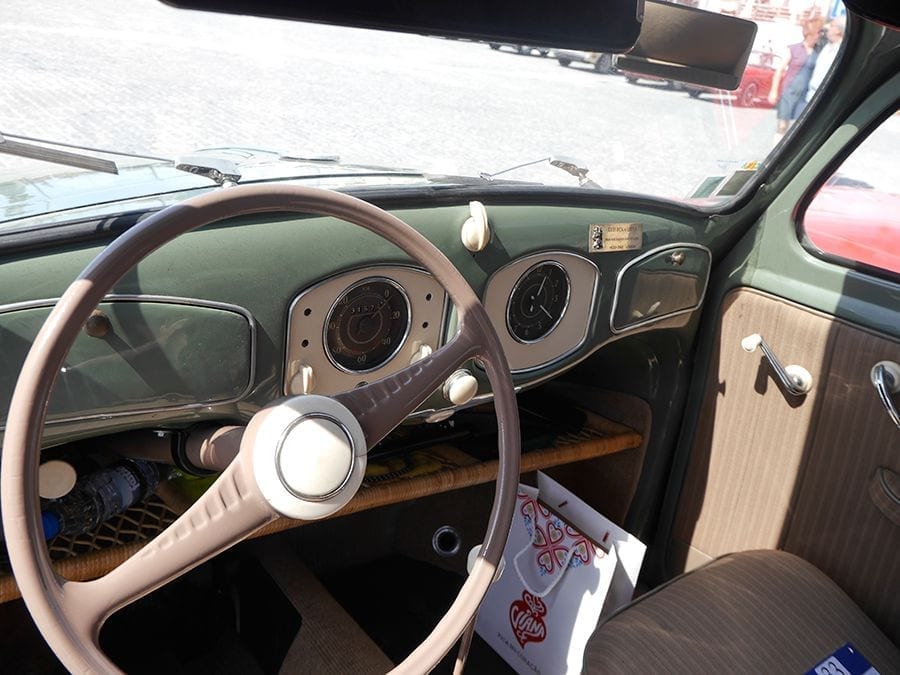

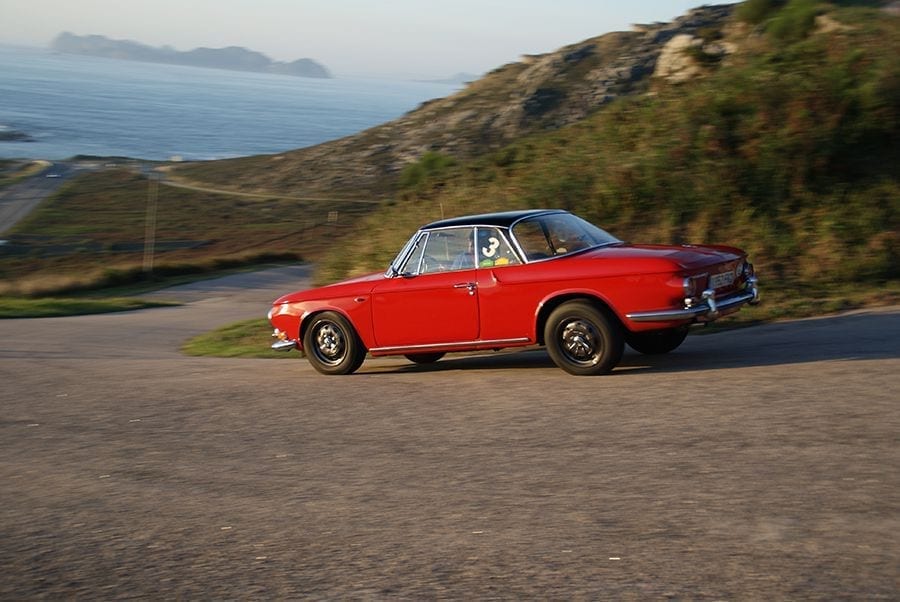
























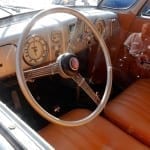

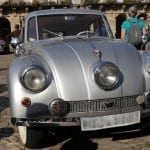



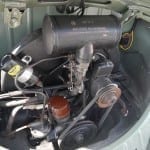







Guillermo leonardo Zila
Rubén Fidalgo
Antonio Flórez SEYMAN
Rubén Fidalgo
Miguel García
Rubén Fidalgo
Mario Carbajo
Gregorio
Mario
Rubén Fidalgo
Gregorio
Rubén Fidalgo
Johnny
Rubén Fidalgo